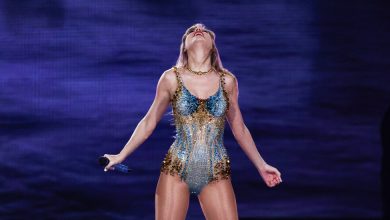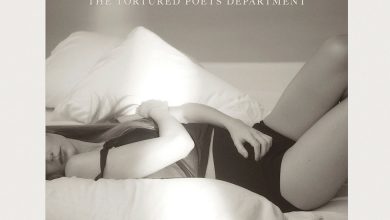New Arts Complex Aims to Build Community in Detroit

DETROIT — “If we knew how the gallery world worked, I don’t know that we would have jumped into it,” said JJ Curis, who, with her husband, Anthony Curis, founded an art gallery, the Library Street Collective, in 2012, in a once-derelict alleyway. But she feels their naïveté going into that first venture may have allowed them to conduct future business with an unconventional mind-set.
Now, hoping to contribute to the city’s artistic renaissance, the Curises have bought and restored the Good Shepherd Catholic Church and rectory from 1912 and are self-funding the redevelopment of the structures and surrounding land into a new cultural arts complex. Expected to open in spring 2023, the Shepherd, as it is now called, is conceived as a hybrid of a commercial gallery space, institution and community center.
While the rapid redevelopment of downtown Detroit over the last decade has led to real estate speculation and displacement of lower income residents and artists, “everything is not negative gentrification,” said Rochelle Riley, director of arts and culture for the city of Detroit, who has backed the project and helped steer the Curises through the complicated approval process.
Starting as young collectors with experience in other fields — Anthony is a Detroit native who worked in his family’s real estate development company and JJ is from Indianapolis with a background in public accounting — the couple, both 40 and living in the suburb of Grosse Pointe, forged a dynamic program extending beyond the white cube of the gallery. They started by collaborating with artists including Jammie Holmes, Nina Chanel Abney and Sam Durant on public projects at buildings and sites all over Detroit, still scarred by riots in the late 1960s.
“From day one, we were deeply interested in seeing how we could impact our community with the gallery,” said Anthony, sitting in the rectory of the now-empty Good Shepherd Catholic Church in Detroit’s East Village, a small neighborhood about 15 minutes east of downtown.
The red-brick Romanesque-style church is the heart of their master plan, which received final special zoning and land use approvals from the city earlier this month and letters of support from the East Village Association, among other neighborhood organizations. It will include two new galleries, a public library and a workshop space within the interior of the church, designed by the Brooklyn-based architectural firm Peterson Rich Office.
The Shepherd will open with a retrospective of the Detroit artist and muralist Charles McGee, a co-founder of the Contemporary Art Institute of Detroit. McGee, who died this year at age 96, is represented by several murals and sculptures around the city that he loved and was a mentor to many local artists.
The Curises, who are organizing the McGee retrospective with the Museum of Contemporary Art Detroit, envision future exhibitions and performances programmed by Library Street Collective with other galleries, nonprofits and collections. They are also honoring McGee with a permanent public sculpture garden on the grounds of the church block and overseeing the fabrication of three new sculptural groupings based on motifs from his earlier mixed-media wall reliefs. These include playful figures now scaled up to 14 feet high; interlocking biomorphic shapes with geometric black-and-white patterning that serve as benches; and abstracted scribbles transformed into hedge-like structures that children can zigzag between.
The Charles McGee Legacy Park, which is receiving additional funding from Dan and Jennifer Gilbert in partnership with the neighborhood organization Jefferson East, Inc., will be a gift to the city of Detroit.
Riley, the arts administrator, said problems have arisen in the past when wealthy people come in from the suburbs and take over a neighborhood without regard for who and what have been there before. The Curises “understand the city that they live in, which is predominantly Black, and are very aware of the legacy to uphold,” she said.
Riley said she hopes the Shepherd will “serve as a role model in placemaking and creating an arts neighborhood in a way that many people can be involved,” adding that she did not hear a single voice of opposition to their plan.
For Anthony Curis, whose father, Michael Curis, has worked in retail development on Detroit’s east side for decades and took him as a young child to community and city council meetings, getting this project off the ground has brought him full circle.
“I understand the nerves that people can have when development happens in the city and it’s not thought out properly,” Anthony said.
The Curises have bought a number of vacant properties near the church and are renovating them as affordable housing and artists’ studios, in what they see as a hedge against the development of expensive condos. They have rented the first of these fixed-up houses to the artists Paul Verdell and Jamea Richmond-Edwards for about 30 percent under market rate.
As part of their outreach to the community, the Curises forged a partnership with the Detroit native and arts educator Asmaa Walton, who formed the pop-up Black Art Library last year, featuring 500 publications about artists of color with a Michigan connection. It has since toured Detroit and Cleveland. Walton has signed on to curate a mini-branch of her collection at the Shepherd, to be called the East Village Arts Library.
“I want it to be a space where people who live around that campus can come in and learn about something they’re interested in, or maybe didn’t know they were interested in,” Walton said.
Another key partner in the Shepherd is the Chicago-based artist McArthur Binion, who grew up in Detroit and remembers McGee as the first artist he ever met, at age 11. When Library Street Collective produced an exhibition by McGee in 2017, Binion came to his old friend’s opening and met the Curises. He enlisted their help in scouting locations for his new foundation, which helps young artists of color in his hometown. When the couple showed him the rectory of the church, Binion knew he had found his space.
“I saw right away that our long-term goals for Detroit could mesh,” said Binion, who has an office and apartment for the visiting artist program of the Modern Ancient Brown Foundation on the rectory’s top floor.
The rest of the rectory is to be converted into a bed-and-breakfast with six guest rooms, and a former garage out back will become a cafe. The design firm OSD will create a broad pedestrian walkway through the complex and new sloping green
space. Binion plans to collaborate with the skateboarder Tony Hawk on the design of a permanent skate park on the block. “We made a decision to maintain the majority of the land within this project as public space,” said Anthony.
The sculpture park was the last project that McGee, in his declining health, was able to work on. His daughter, Lyndsay McGee, said he saw it as a place of joy and play. “He loved the idea of children being able to interact with his work,” she said.
In his final days, she called the Curises, who were the only gallerists to represent her father during his long career, to come say goodbye, warning that he probably wouldn’t recognize them. JJ described sitting at the artist’s bedside. “Out of nowhere,” she recalled, “he looks at Anthony and said, What material is the project? What material?”
McGee’s designs for the new sculptures will be fabricated in stainless steel, fiberglass, aluminum and urethane to withstand public wear and tear.
“Hearing him say that was so much pressure and at the same time motivation to see this project through,” Anthony said. “Charles’s whole thing was about bringing people together and finding common ground. He really saw this as that opportunity.”



